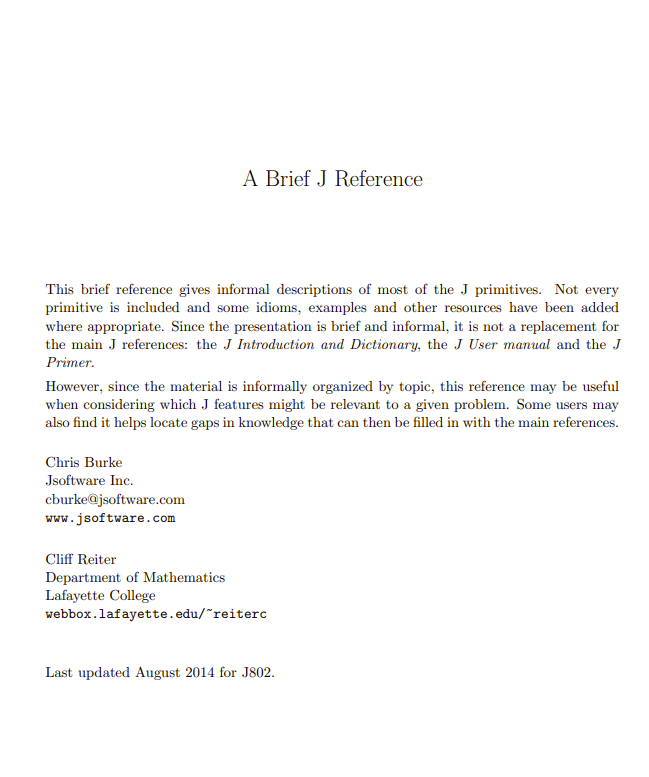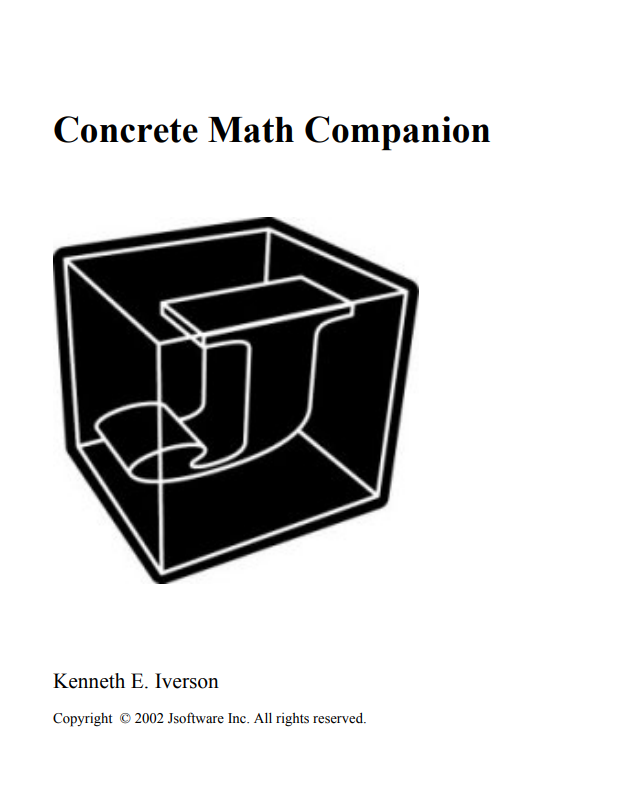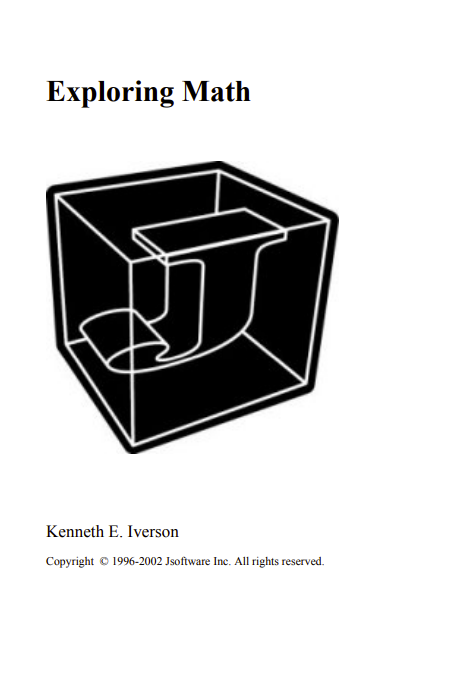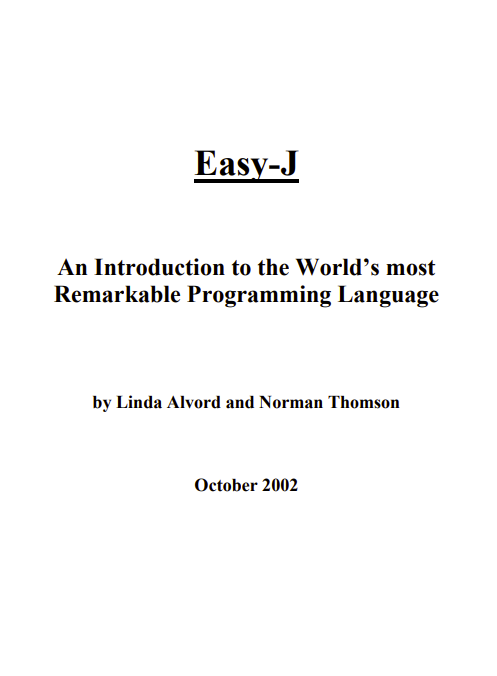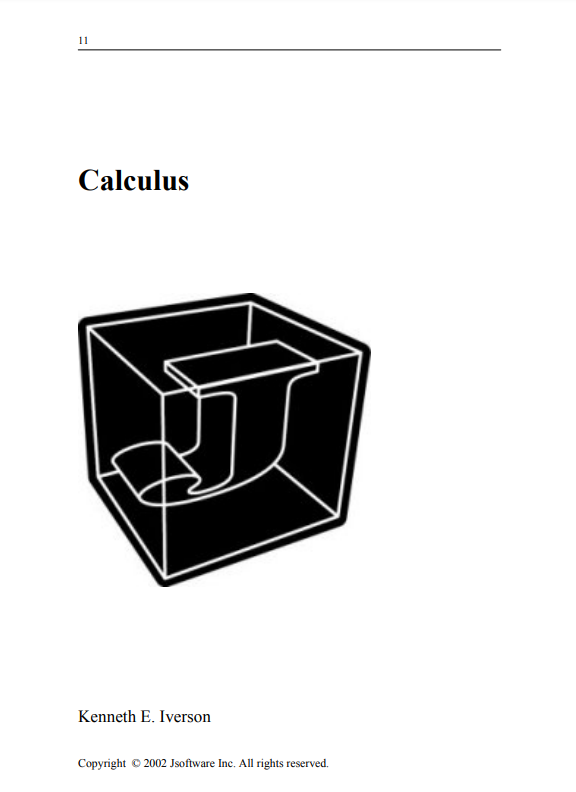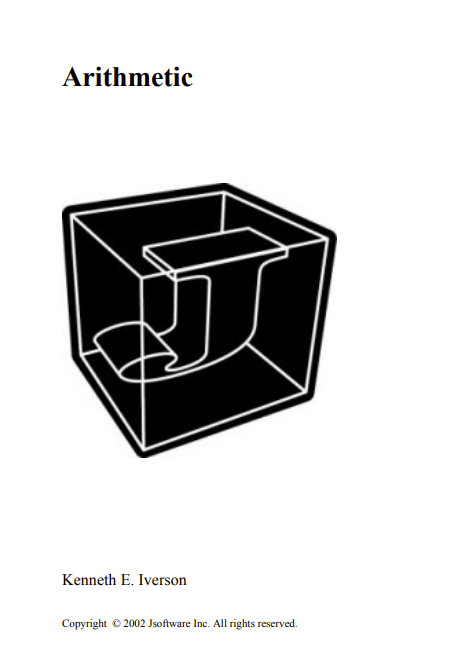This brief reference gives informal descriptions of most of the J primitives. Not every primitive is included and some idioms, examples and other resources have been added where appropriate. Since the presentation is brief and informal, it is not a replacement for the main J references: the J Introduction and Dictionary, the J User manual and the J Primer.
However, since the material is informally organized by topic, this reference may be useful when considering which J features might be relevant to a given problem. Some users may also find it helps locate gaps in knowledge that can then be filled in with the main references.
The J programming language, developed in the early 1990s by Kenneth E. Iverson and Roger Hui, is an array programming language based primarily on APL (also by Iverson).
To avoid repeating the APL special-character problem, J uses only the basic ASCII character set, resorting to the use of the dot and colon as inflections to form short words similar to digraphs. Most such primary (or primitive) J words serve as mathematical symbols, with the dot or colon extending the meaning of the basic characters available. Also, many characters which in other languages often must be paired (such as [] {} “” “ or <>) are treated by J as stand-alone words or, when inflected, as single-character roots of multi-character words.
J is a very terse array programming language, and is most suited to mathematical and statistical programming, especially when performing operations on matrices. It has also been used in extreme programming and network performance analysis.
